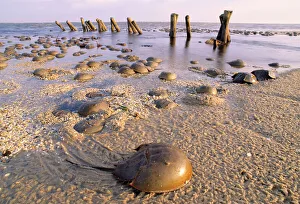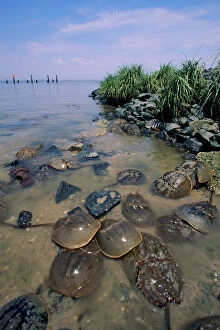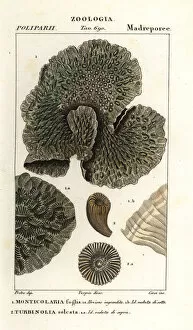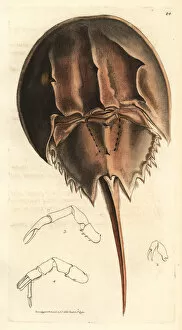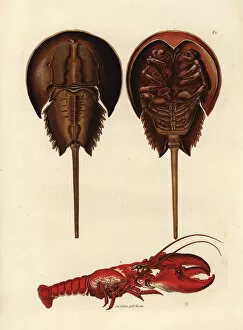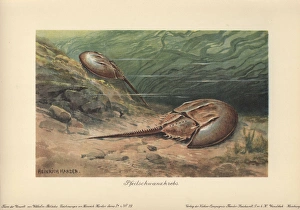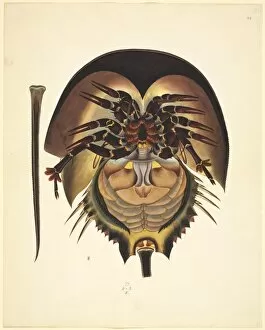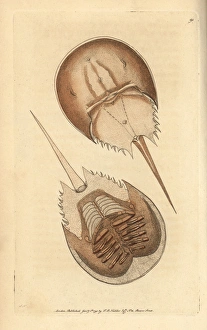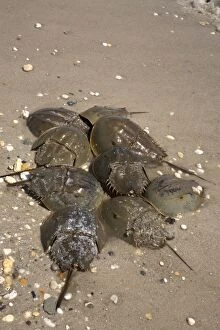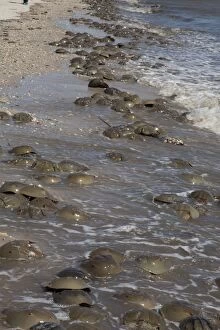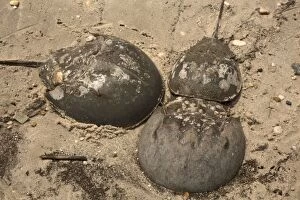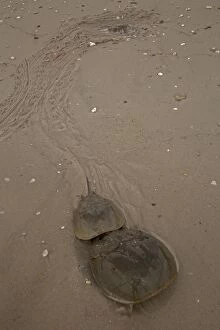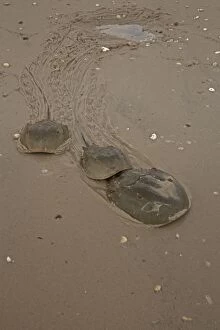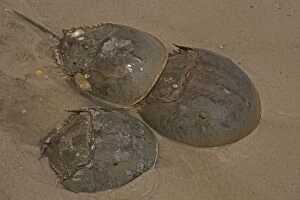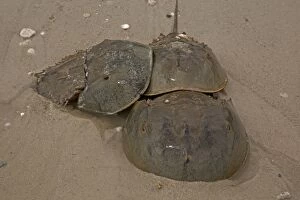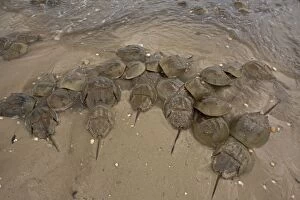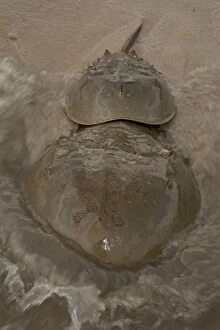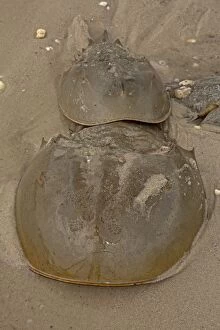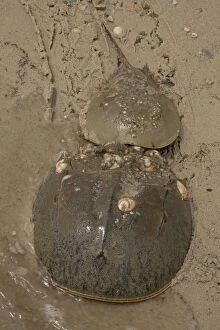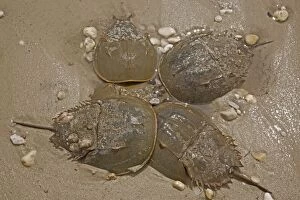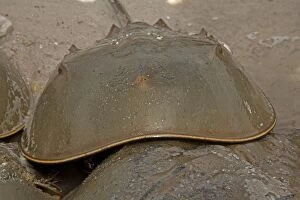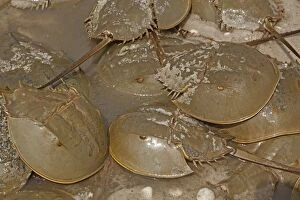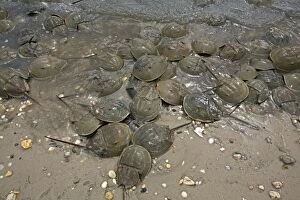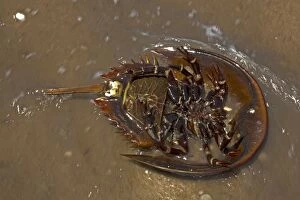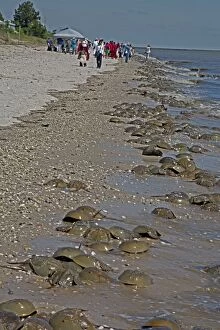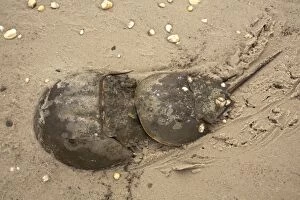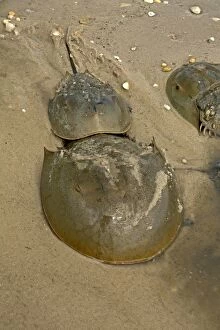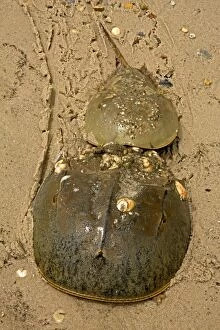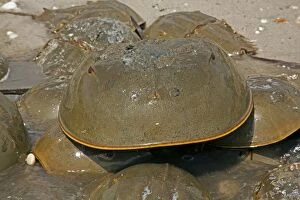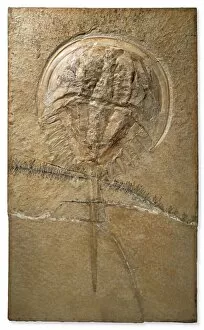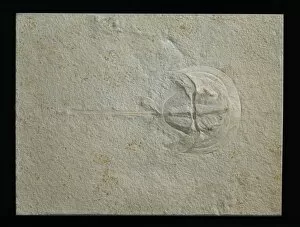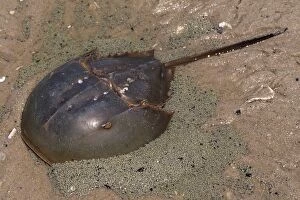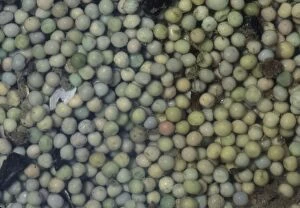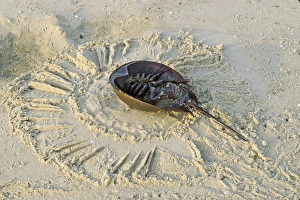Limulus Collection
The Limulus polyphemus, commonly known as the Atlantic horseshoe crab, is a fascinating creature found along the shores of Reeds Beach in New Jersey, USA
All Professionally Made to Order for Quick Shipping
The Limulus polyphemus, commonly known as the Atlantic horseshoe crab, is a fascinating creature found along the shores of Reeds Beach in New Jersey, USA. As the tide recedes, these ancient creatures often make their appearance on the sandy beach, with sea groynes standing tall in the background. With its unique horseshoe-shaped carapace and long spiky tail resembling a medieval weapon, this species has captivated scientists and beachgoers alike. The Limulus polyphemus belongs to an ancient lineage that dates back over 450 million years, making it one of Earth's oldest living organisms. As we explore closer, we can observe remnants of horn coral and extinct coral scattered around these remarkable creatures. It serves as a reminder of how life has evolved throughout millennia and how these resilient animals have stood the test of time. Intriguingly enough, horseshoe crabs are not alone in their coastal habitat. In some instances captured by photographers lucky enough to witness such moments, they share space with lobsters or even edible crabs like European lobster. These encounters offer glimpses into the intricate web of marine life thriving within our oceans. However striking their presence may be on our beaches today, it is essential to note that Limulus polyphemus faces threats in its natural environment. Classified as "Near Threatened, " conservation efforts must continue to protect this incredible species for future generations to marvel at its existence. One historical engraving from The Pictorial Museum of Animated Nature captures the essence of this magnificent creature perfectly - showcasing its distinctive features while highlighting its significance within nature's grand tapestry. Picture No. 11091730 immortalizes this moment forever. So next time you find yourself strolling along Reeds Beach or any other shoreline where Horseshoe Crabs reside – take a moment to appreciate these living fossils; symbols of resilience and endurance that connect us directly with the ancient past.

